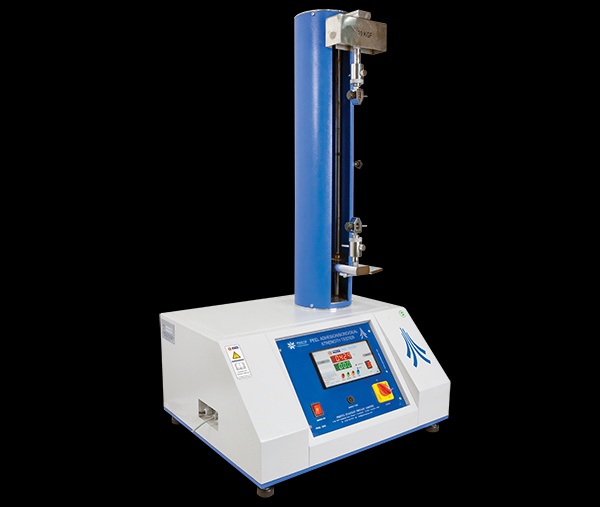In the dynamic realm of industrial quality control, peel strength testing stands out as a critical process to ensure product integrity. Whether you are a seasoned professional or just delving into the intricacies of material testing, understanding the nuances of peel strength and the role of a peel tester is indispensable.
The Essence of Peel Strength Testing
Peel strength refers to the force required to separate two bonded materials, and it is a key parameter in various industries such as packaging, automotive, and electronics. Manufacturers keen on delivering top-notch products often employ peel testers to evaluate the adhesive strength of materials.
What is a Peel Tester?
A peel tester is a sophisticated instrument designed to measure the force needed to peel two materials apart. It is an invaluable tool in quality control, helping manufacturers assess the reliability of adhesives in diverse applications.
Components of a Peel Tester
- Load Cell: The heart of a peel tester, the load cell accurately measures the force applied during the peeling process.
- Grip Mechanism: This component securely holds the materials in place, ensuring a controlled and consistent peeling environment.
- Control Panel: An intuitive interface allows users to set parameters, ensuring precise and repeatable tests.
The Significance of Accurate Peel Strength Testing
Precision in peel strength testing is synonymous with uncompromised quality assurance. Manufacturers can identify weak points in adhesive bonds, enabling them to enhance product reliability and customer satisfaction.
Understanding peel strength aids in the optimization of material design. Manufacturers can fine-tune adhesive formulations and material combinations to meet specific performance requirements.
In sectors where safety and compliance are paramount, such as aerospace and medical devices, adherence to stringent peel strength standards is non-negotiable. A reliable peel tester becomes an indispensable ally in meeting and exceeding these benchmarks.
How to Perform a Peel Strength Test
- Sample Selection: Choose representative samples that mirror real-world conditions.
- Surface Preparation: Ensure surfaces are clean and free from contaminants that might affect adhesion.
- Calibration: Calibrate the peel tester to guarantee accurate force measurements.
- Grip Alignment: Align grips carefully to avoid uneven stress distribution during the test.
- Initiating Peel: Gradually apply force until peeling occurs.
- Recording Data: The peel tester records real-time data, providing insights into the peeling process.
- Peel Strength Calculation: Use the recorded data to calculate peel strength values.
- Interpretation: Analyse results to identify trends, potential weaknesses, and areas for improvement.
Outranking the Competition: Crafting a Superior Peel Strength Testing Article
In the competitive landscape of online information, our mission is to provide an unparalleled guide to peel strength testing and peel testers. We go beyond the basics, offering a holistic view that resonates with industry professionals and enthusiasts alike.
Our commitment is to cater to the user's intent, addressing queries comprehensively. From the fundamental principles of peel strength testing to advanced techniques, our content delves into the core of what users seek.
Unravelling Complex Concepts
While maintaining clarity, we tackle intricate aspects of peel strength testing. By demystifying technical jargon and elucidating complex concepts, our content ensures accessibility without compromising depth.
Grounded in practicality, our article bridges the gap between theory and real-world applications. We share case studies, success stories, and expert insights, providing a rich tapestry of knowledge for readers seeking actionable information.
To elevate our content, we incorporate expert opinions and practical tips from industry leaders. This not only adds credibility but also presents diverse perspectives, enriching the reader's understanding of peel strength testing.
Conclusion
In the ever-evolving landscape of quality control, the importance of peel strength testing cannot be overstated. Our commitment to delivering a comprehensive guide sets us apart, ensuring that industry professionals and enthusiasts find a valuable resource in our article.


No comments yet